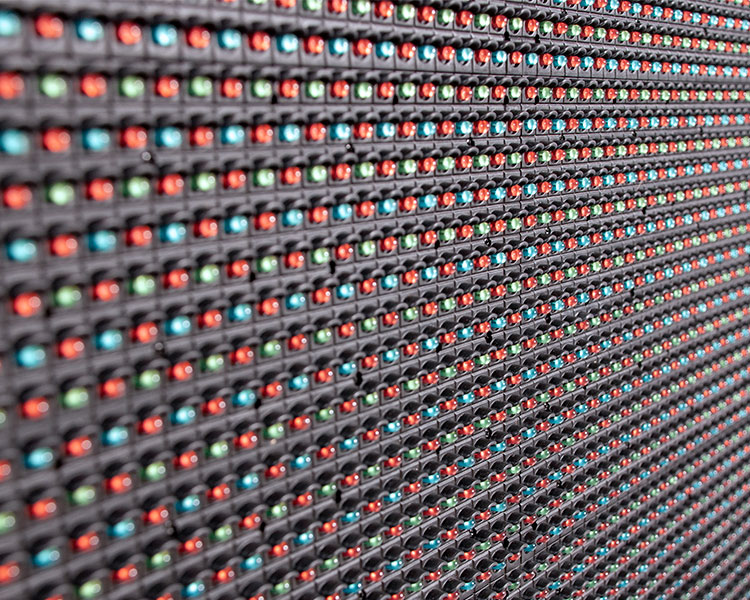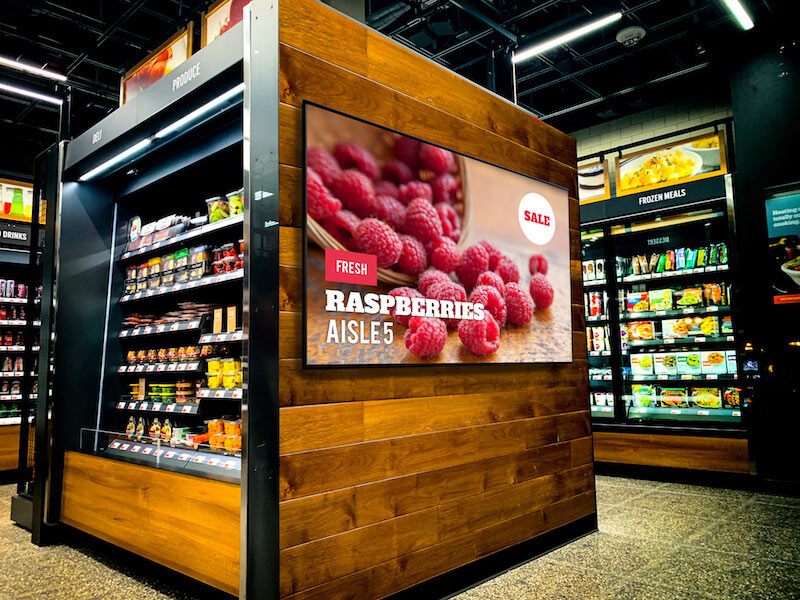New Ideas On Picking Outdoor Fixed Led Display
New Ideas On Picking Outdoor Fixed Led Display
Blog Article
What Are The Top Aspects To Take Into Consideration When Selecting The Best Led Display?
When researching LED displays, resolution and pixel pitch are crucial factors to take into consideration. These two factors directly affect the clarity of detail and the overall image created by the LED display. The reason they are important:
1. Image Quality
Pixel Pitch Pixel pitch can be measured as the distance between the center of one LED pixel and the center of the next. A lower pixel pitch means that the LEDs will be more in proximity. This leads to higher pixel density, and higher resolution. This results in sharper, detailed images.
Resolution: Resolution refers to the total amount of pixels that the display has, typically described in width x height (e.g. 1920x1080). Higher resolutions allow the display to be more detailed and provides a more immersive experience, particularly important for large screens where viewers are close to the display.
2. Viewing Distance
Pixel pitch is directly linked to the best viewing distance. To avoid pixelation, displays that are viewed closely such as those in retail and exhibitions or in indoor displays, need a smaller pixel-pitch (and higher resolution). For outdoor billboards or large-scale display that are viewed from a distance a larger pixel pitch might suffice since the individual pixels are not apparent from a distance.
3. Content Versatility
Displays featuring lower pixel pitch, higher resolution and a smaller screen size are able to accommodate diverse types of content. These include high-definition graphics and text as and complex graphic designs. This flexibility is essential for applications that need the use of dynamic content. Digital signage is one example, as are studios for broadcasting, and control rooms.
4. Cost Implications
It is true that a smaller pitch of pixels can produce better images however the price for the display's production will rise significantly. High resolution screens are more costly to manufacture because of the higher quantity of LEDs needed. Therefore, it is important to take into consideration the purpose, viewing distance and budget when balancing the need for high-resolution screens.
5. Application Specificity
The application can determine the significance of pixel pitch as well as resolution.
Indoor Displays require smaller pixel spacing (e.g. between 1.2mm all the way to 2.5mm) in order to guarantee excellent quality even at close-up distances.
Outdoor Displays: May have larger pixel pitches (e.g., 4mm to 10mm) due to the fact that they are seen from greater distances, where high resolution may be less important.
6. Durability, Longevity, and Upgradability
As display technologies advance as they advance, the pixel pitch is expected to decrease, allowing greater resolutions even in smaller areas. By investing today in a display with best pixel pitch that are more effective and relevant for a longer time. This means that you don't have to update often.
Conclusion:
Pixel pitch and resolution are crucial elements of the performance of an LED display especially when it comes to image quality, viewing experience and the flexibility of content. Consider your budget, your target audience and your application when selecting LED displays. Read the top creative led displays for website recommendations including led panels, outdoor led monitor, flexible led screen display, transparent screen, digital display, led screen rental, led screen, led video wall panels, led display device, video wall tv and more.
What Is The Importance Of Weight And Portability When Researching Led Displays?
Consideration of weight and portability is important when choosing LED displays. This is particularly true in situations where the flexibility, ease of installation and transportability are the most important considerations. These factors are crucial because of a variety of factors.
1. Installation and Setup Ease
The weight of LED displays is less. Lighter LED displays are more manageable when installing, particularly in environments where displays need to be hung on ceilings, walls, or other structures. Weight: Large displays will require support systems with greater weight. This may make installation difficult and add the cost of installation.
Mobility: Portable displays can be quickly set up and removed and taken down, which makes them perfect for temporary events, installations and trade exhibitions. They're lightweight and are easy to transport and can be set up in a fraction of time required to set up every display.
2. Rental and Staging
Frequent Movement In staging and rental markets where displays are often transferred from one place to another, lightweight LED panels that are portable and easy to move around are crucial. They enable shorter turnaround times between events, reduce cost of transport, and also reduce the chance of damage resulting from handling.
Modularity - LED display systems for portable use are often modular in design, making them easy to disassemble and assemble. This flexibility is essential in creating customized displays to accommodate various requirements for events.
3. Structural Requirements
Support Structures. Larger LED displays require stronger and more complicated mount structures. This may increase the cost and complexity of installation. Contrary to bigger displays, smaller, less expensive structures can be used to support them, making them versatile to be used in a variety of environments.
Venue Constraints Many venues have weight restrictions on the structure. This is often the case with ceiling or wall mounts. A light-weight display can allow the installation to be able to accommodate these limitations.
4. Transport and Logistics
Shipping costs: The weight of LED displays can have an impact directly on the cost of shipping and handling. Shipping costs are less expensive for lightweight displays, particularly when they are employed in large-scale deployments and international transport.
Storage and handling: Lightweight and portable display units are simpler to store and handle, requiring less space and a simpler logistics process, which can be crucial for companies who often transport their displays to different locations.
5. Flexible use
Modularity. Portable, lightweight displays typically modular and can be configured with different shapes or sizes to accommodate the requirements of different applications. This is useful in creative installations which require a flexible design.
Application Versatility: These displays are versatile enough to be used for a broad range of events, from small pop-up events to massive outdoor concert events. They offer a degree of versatility that is unmatched by larger and heavier displays.
6. Safety Beware of
Reduced Risk: Displays which are lighter pose less risk when handling and installing them, which decreases the chances of damage or accident to the display. This is particularly crucial when the display is frequently moved or adjusted.
Compliance: In certain instances, safety regulations may dictate the weight limit for displays especially in public spaces. To avoid issues with compliance, you must ensure that your display complies with the requirements of these regulations.
7. Energy Efficiency
The weight of a display isn't always directly related to the power consumption of a display, however lightweight displays are made to be energy efficient. Displays with LEDs that are portable can use less power and is a huge advantage in situations with little sources of power or want to cut operational costs.
Conclusion:
LED displays need to be light and mobile. This is crucial particularly in situations that require them to be moved frequently, in temporary settings or in locations that have little structural support. These factors not only influence the ease of transporting and installation, but also the flexibility and safety of the display. If you're considering LED displays that weigh a lot, weight and portability are important elements to consider when the application is one that requires frequent relocations, quick setup, or adherence to security or structural requirements. Take a look at the best led rental screen for site info including tv the wall, board led, led display, flexible led display screen, flexible led display, outdoor led display screen, led screen for outdoor, led in walls, led panel transparent, video wall tv and more.
How Important Is Color Accuracy And Calibrating When It Comes To Led Displays?
The accuracy of the color of LED displays is extremely important especially when it comes to applications that deal with branding integrity and visual quality. Why these factors are important:
1. Visual Quality and Realism
Color Accuracy refers to the level of precision with which an LED display reproduces colors as desired by the creators of content. Color accuracy that is high ensures that videos and images appear vibrant, real and vivid. They also look clear and free of distortions.
Important: In cases such as advertising and broadcasting retail, professional and professional presentations, precise colour reproduction is vital for maintaining the appeal of visuals and conveying the message.
2. Brand Integrity
Accurate color matching is vital for companies who depend on a certain color scheme to identify themselves. A deviation from proper colors can misrepresent the brand and could damage its image.
Application: To guarantee uniform branding across all mediums, including corporate displays, retail displays advertising, and various other platforms, it is essential to keep brand colors accurate.
3. Engagement and its impact on the Audience
Enhanced viewing experience for viewers Superior color accuracy will create a more immersive, engaging and immersive experience for your viewers. Accurate colors help convey emotions and messages more effectively, enhancing the overall effect of the screen.
Application: In the entertainment industry, museums, or any setting where the content is created to trigger a particular emotional response, accurate color assures that the viewer experiences the content as intended.
4. Content Creator Intent
True Representation Design, artists, and content creators often invest significant effort into crafting images that are based on specific color palettes. Their work is presented precisely as intended with a LED display that reproduces exact colors.
Application: For areas such as digital arts such as photography, film or, where colors play an important role in telling stories and aesthetic appeal, it's crucial to ensure that the colors are accurate. This is in keeping with the vision of the artist.
5. Calibration to ensure Consistency
Uniformity across Panels: Calibration is used to make sure that all panels in an LED display are calibrated so they show the same colors and brightness, thereby preventing seams or mismatches. This is especially important for large-scale displays made up of several panels.
Regular Maintenance is necessary to maintain the accuracy of color. Even the best displays may deviate over time. To make sure that the display meets standard of quality and functions consistently regularly, periodic calibration of the display is required.
Application: Calibration is essential for outdoor video walls, displays, or multi-panel installations. It is essential to achieve an even and seamless appearance.
6. Impact on content types
Different types of content: Different types of content require different levels of accuracy in terms of color. As an example medical displays have to be extremely accurate in order to provide proper diagnosis, while advertising displays could be more concerned with vibrancy and saturation.
Application Specialization: In fields that are highly specialized like design, medical imaging or high-end retailers the capability to calibrate colors precisely ensures the display meets the needs of the particular content being shown.
7. Technology and Specifications
Bit Depth and Gamut as well as wide color gamut. Displays that have high bit-depth and a wide color gamut (such as DCI P3 and Rec.2020) provide greater color accuracy and reproduce a wider range of colors. 2020 offers better color accuracy, and can reproduce more colors. Understanding these specifications are important when choosing a screen for applications that require high-quality color.
Advanced calibration tools: A lot of modern LED displays include sophisticated calibration tools that include software. This allows for precise adjustments and guarantees that the display will remain accurate in the long run.
Applications: In industries which require a high degree of color accuracy, such as film production, graphic design and marketing that is high-end It is crucial to invest in displays with high-end color accuracy.
Conclusion:
Color accuracy and calibrating LED displays is vital to ensuring they deliver superior visuals that remain consistent with brand standards. The display can be used for advertising, entertainment, professional presentations, or specialized fields like medical imaging, precise color reproduction is essential for achieving the desired impact and preserving the integrity of the visual. When considering LED displays, it is important to be focusing on color accuracy as well as consistency and calibration, particularly when your project demands precise colors. Take a look at the recommended flexible led panels for website info including led screen transparent, flexible led screen display, led screen for outdoor, display device, transparent led panel, transparent display monitor, transparent led screen, led panel rental, led display rental, led light board and more. 